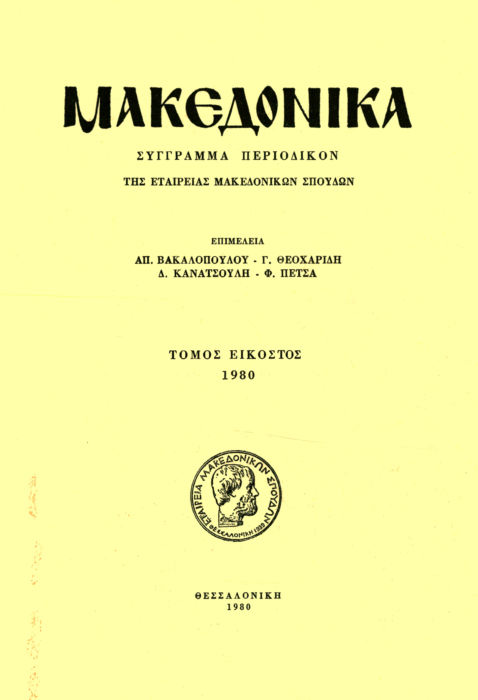The population and the Greek community of Thessaloniki in 1913
Abstract
His diary book of C.P. Tattis was found recently among the belongings of his great granddaughter, Kalliopi (Poppi) Seremetis (1894-1978). Her maiden name was Tattis as she was the daughter of In April 1913, a few months after Thessaloniki was liberated from the Turkish occupation which lasted for five centuries, the Greek Minister of Justice, Konstantine Raktivan, acting as Governor General of Macedonia, held a census of the Thessaloniki population. Catalogues with the names of those who were used for the actual management of that census, unfortunately only the Greek ones, have been preserved in the Historical Archive of Macedonia, Thessaloniki. Those catalogues, issued by the Greek Metropolitan of Thessaloniki and various other institutions in the town, like the Greek Gymnasium, banks, clubs and guilds, give a rather detailed description of the Greek community in Thessaloniki, before the arrival of emmigrants from south Greece, and refugees from Asia Minor changed drastically the composition of the population in the town.
The article includes those catalogues as well as several other details concerning the way the census was held, found in contemporary newspapers.
Article Details
- How to Cite
-
Δημητριάδης Β. (1983). The population and the Greek community of Thessaloniki in 1913. Makedonika, 23(1), 88–116. https://doi.org/10.12681/makedonika.332
- Issue
- Vol. 23
- Section
- Articles

This work is licensed under a Creative Commons Attribution-NonCommercial-ShareAlike 4.0 International License.
Authors who publish with this journal agree to the following terms:
- Authors retain copyright and grant the journal right of first publication with the work simultaneously licensed under a Creative Commons Attribution Non-Commercial License that allows others to share the work with an acknowledgement of the work's authorship and initial publication in this journal.
- Authors are able to enter into separate, additional contractual arrangements for the non-exclusive distribution of the journal's published version of the work (e.g. post it to an institutional repository or publish it in a book), with an acknowledgement of its initial publication in this journal.
- Authors are permitted and encouraged to post their work online (preferably in institutional repositories or on their website) prior to and during the submission process, as it can lead to productive exchanges, as well as earlier and greater citation of published work (See The Effect of Open Access).







